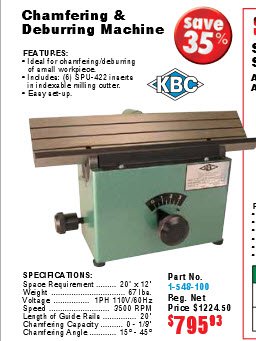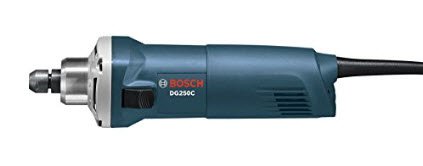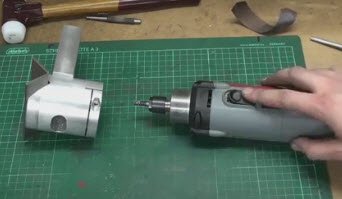This is a work in progress I've been dabbling with & its turning into a love/hate thing. I already had this smaller Makita router, variable speed, 1/4" collet. It has an accessory with kind of a rack & pinion motion which slides on the motor body & then clamp in whatever depth position. So I made an aluminum sub-plate to match the router base hole pattern...which was one of the most convoluted exercises in reverse engineering because of their bizarre bolt pattern. The plate is tapped to mount my steel angle blocks. The stock slides between the angle blocks & gets chamfered with bottom edge of EM which is kind of a nice cutting mode. The initial idea was to bolt this assembly to the edge of a workbench via a chunk of heavy MDF or something
The good: It edges very well actually. My pics don't come out well but in real life edges are quite crisp & nice finish. Aluminum is easy but even mild steel doesn't strain the motor or want to kick the part back in my face (~ 0.060" wide chamfer medium speed). I guess if wanted to chamfer a large piece I could just hand hold the router & zip around the edge that way too. I have another idea to remove the bevel blocks & mount a rail or a finger, that way I could use cove shaped bullnose bits or chamfer curved edges vs. linear. Maybe regular router carbide wood bits would work?
The not so good: It never occurred to me that the metal swarf that gets generated can migrate to unwanted places. My plate clearance hole is pretty close to 0.25" EM but its still a path for metal shavings to find their way into the rotor/windings via the cooling fan opening. Normally this end of router points down to the work, exhales air & its only wood dust. Metal particles is probably asking for trouble. I tried making a filter donut but I need something thicker maybe like that open breathing mesh stuff you see on dirt bikes? Maybe this is why guys have retrofitted die grinders instead of routers which are a lot more enclosed. The end mill is .25" dia & 0.25" shank. Unfortunately its carbide. The HSS ones I found were all 0.375" bodies, too big. I would prefer it to sit lower in the collet. Anyone know how to lop off carbide? Will one of those regular angle grinder cut-off blades work?
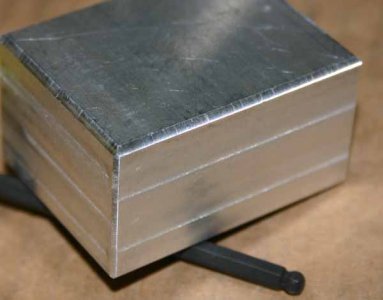
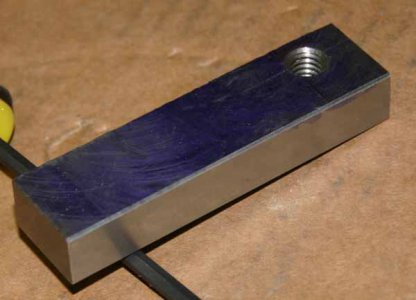
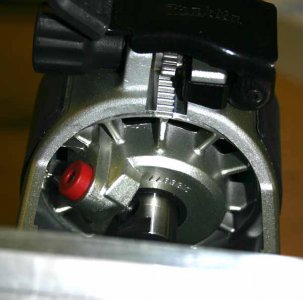
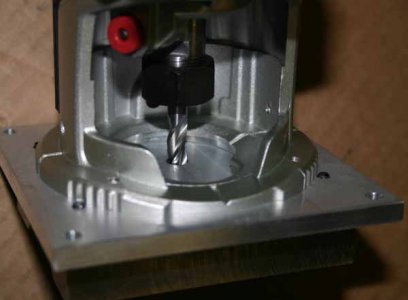
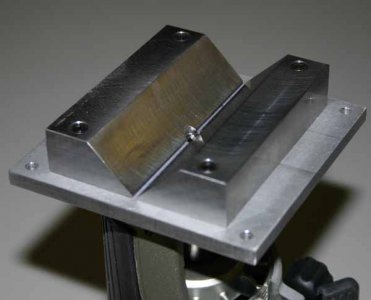
The good: It edges very well actually. My pics don't come out well but in real life edges are quite crisp & nice finish. Aluminum is easy but even mild steel doesn't strain the motor or want to kick the part back in my face (~ 0.060" wide chamfer medium speed). I guess if wanted to chamfer a large piece I could just hand hold the router & zip around the edge that way too. I have another idea to remove the bevel blocks & mount a rail or a finger, that way I could use cove shaped bullnose bits or chamfer curved edges vs. linear. Maybe regular router carbide wood bits would work?
The not so good: It never occurred to me that the metal swarf that gets generated can migrate to unwanted places. My plate clearance hole is pretty close to 0.25" EM but its still a path for metal shavings to find their way into the rotor/windings via the cooling fan opening. Normally this end of router points down to the work, exhales air & its only wood dust. Metal particles is probably asking for trouble. I tried making a filter donut but I need something thicker maybe like that open breathing mesh stuff you see on dirt bikes? Maybe this is why guys have retrofitted die grinders instead of routers which are a lot more enclosed. The end mill is .25" dia & 0.25" shank. Unfortunately its carbide. The HSS ones I found were all 0.375" bodies, too big. I would prefer it to sit lower in the collet. Anyone know how to lop off carbide? Will one of those regular angle grinder cut-off blades work?







